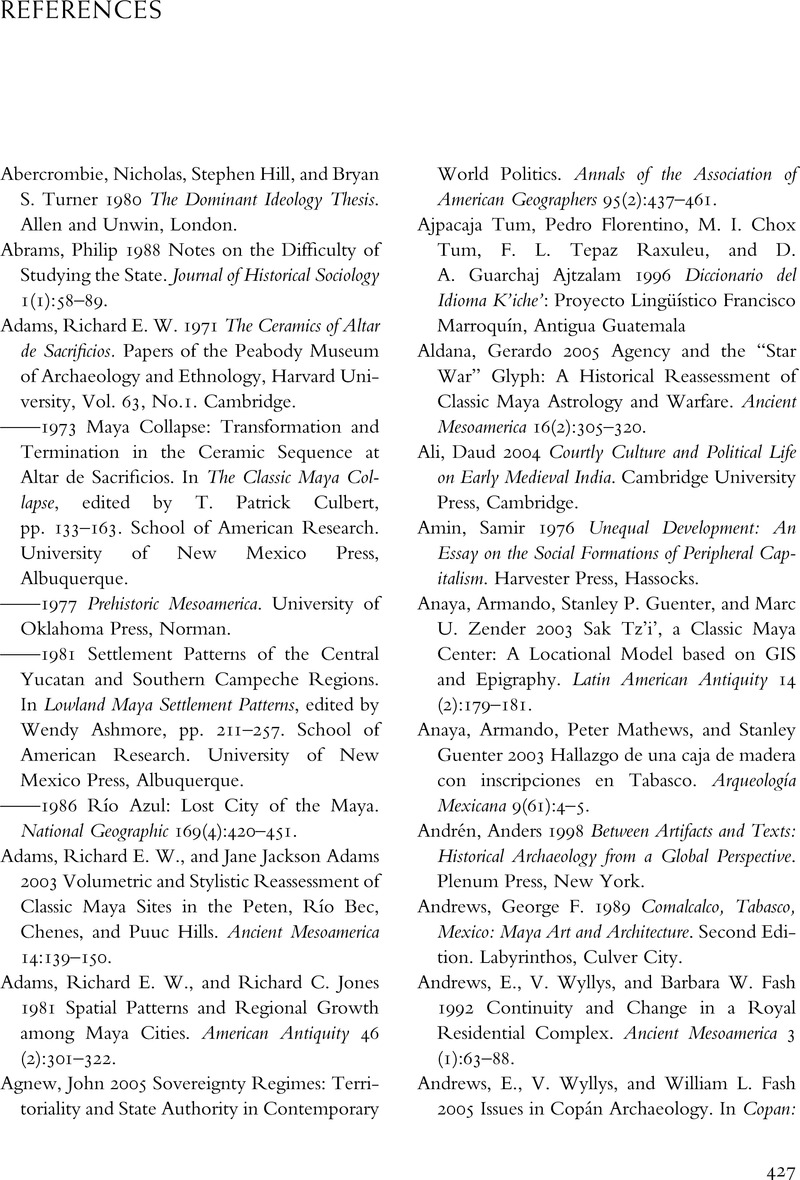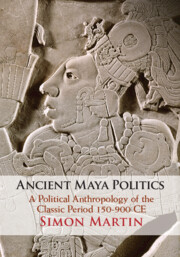Book contents
- Ancient Maya Politics
- Ancient Maya Politics
- Copyright page
- Dedication
- Contents
- Illustrations
- Maps
- Tables
- Case studies
- Preface
- One Introduction: The Questions
- Part I Agendas in Classic Maya Politics
- Part II Epigraphic Data on Classic Maya Politics
- Part III A Political Anthropology for the Classic Maya
- Appendix An Inventory of Emblem Glyphs
- Notes
- References
- Index
- References
References
Published online by Cambridge University Press: 13 July 2020
- Ancient Maya Politics
- Ancient Maya Politics
- Copyright page
- Dedication
- Contents
- Illustrations
- Maps
- Tables
- Case studies
- Preface
- One Introduction: The Questions
- Part I Agendas in Classic Maya Politics
- Part II Epigraphic Data on Classic Maya Politics
- Part III A Political Anthropology for the Classic Maya
- Appendix An Inventory of Emblem Glyphs
- Notes
- References
- Index
- References
Summary

- Type
- Chapter
- Information
- Ancient Maya PoliticsA Political Anthropology of the Classic Period 150–900 CE, pp. 427 - 488Publisher: Cambridge University PressPrint publication year: 2020



